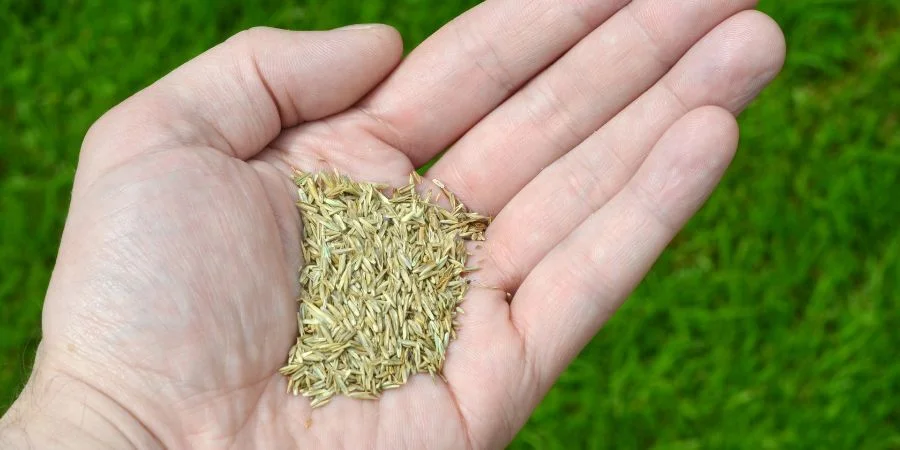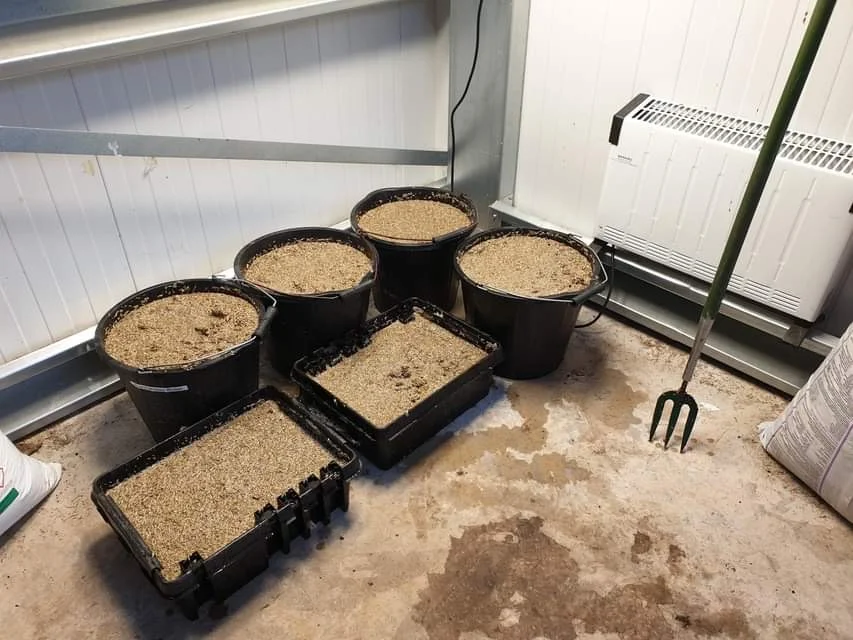Should You Clean Your Lawn Mower After Every Use? Here’s The Answer
Last Updated on January 16, 2025 by Duncan
Lawnmowers generate large amounts of dust, pollen, and filth. Because of this, you have to clean them to make them look better and avoid technical problems caused by grass clumps getting stuck in the blades.
This being the case, you might wonder whether you must clean your lawn mower after every use. The good news is that you don’t.
As long as you clean the lawnmower frequently enough, dirt, moisture, and grass particles will not build up and solidify on the deck. This will prevent the lawnmower from being damaged and protect it from rust and poor cutting performance.
You should clean your lawnmower at least twice in the spring and summer and before your first mow of the season. Thoroughly cleaning your mower when storing it for the winter is also a good idea.
You might need to clean your lawnmower more frequently if you have to mow extremely long grass or if the grass is still damp.
How do you clean a lawnmower?
To get the best results, you must properly clean your lawnmower. To help you out, here is how to go about it:
Prepare the mower for cleaning.
The first step is preparing the mower for safe cleaning. Before washing, ensure the engine is off and has had time to cool down. While this is the case, don’t wait too long, as the grass clippings may dry out and become more difficult to remove from the mower deck.
Lower the deck to its lowest height to get the mower blades as close to the ground as possible. Consider taking the mower’s spark plug out for increased safety (as well as to save parts). This will shield the spark plug from getting wet during cleaning and stop any unintentional starts.
Remove the debris and clean the top of the mower.
After the mower has cooled, use a brush or leaf blower to clear loose material from its top. Do not use a hose. Numerous non-watertight components, such as the air filter, oil filter, and spark plug housing, are located on top of the mower and may be damaged if they get wet.
After removing heavier debris, use a rag and cleaning solution to clean the mower and remove any remaining dust and dirt.
Clean the mower deck.
If your lawn mower has a washing port, connect a hose, run some water through it, and start the mower to sharpen the blades. The water flowing through the mower’s underbelly and blades will dislodge grass clippings.
If your mower lacks a washing port, turn it over slightly to reveal the blades. Then, you can manually clean the blades using a brush or sponge.
Another way to do it is to use your mower while sprinkling water from a hose against the ground near the back corner of the mower deck, causing the water to splash under the mower. This directs water beneath the deck so as not to wet any moisture-sensitive areas.
As usual, the most crucial thing is to keep water from accidentally reaching the essential parts. Among the most critical mower components to stay away from are:
- Spark plugs, mower ignition, and additional switches or electrical parts
- Air purifier
- Oil filter
- Inside the vents or engine housing
What happens when you don’t clean your lawnmower as frequently as you should?
The razor-sharp blades under your mower slice through the grass when you mow, leaving you with an elegant-looking lawn. While this is great for your yard, grass clippings get stuck below the lawnmower.
As mentioned above, over time, these clippings build up and create an untidy, matted layer that not only looks bad but can lead to issues such as:
Diminished Airflow: If your mower’s underbelly becomes blocked, it may have trouble breathing, and the carburettor may overheat.
If you see overheating or other problems linked to airflow in your mower, you can inspect the air filter.
Moisture and Rust: Grass cuttings offer the perfect conditions for the growth of rust and moisture. Rust threatens the longevity of your mower. Over time, it may damage important components and make your mower less dependable.
Fungal Diseases: Numerous fungi thrive in the filthy, clogged underside of the mower, which your mower subsequently transfers to your grass, leading to fungal diseases.
When you regularly clean your lawnmower, you can prevent all of these issues from coming about. To ensure your lawnmower lasts for as long as possible, you must undertake proper lawnmower maintenance. This calls for you to do the following:
- Start the mowing season by sharpening the mower blades at least once.
- During the mowing season, clean or replace the air filter (for gas mowers only) at least once.
- Inspect and replace the spark plugs (only for gas mowers) when needed
- Check and replace the engine oil (for gas mowers only) after 25 to 50 hours of operation
- When storing an electric mower for the off-season, winterize it by inspecting the cords or carefully putting the batteries away. For gas mowers, this includes draining the gas from the engine.
Tricks to prevent your lawnmower from getting too dirty
You should devise several strategies to avoid having to clean your lawnmower after every mowing. Some of these strategies include:
Mow later in the day: By giving the grass time to dry out, you reduce the amount of water that gets and sticks to your lawnmower. It has also been shown that this cuts down on the grass clippings’ mess. For a great experience, mow later in the day or at midday.
Mow more frequently: You might have the impression that the more frequently you mow your grass, the more often you have to clean your lawn mower, but this isn’t the case. Frequent grass-cutting benefits both your lawn and your lawn mower.
Long grass leaves a mess on the lawn and the machine, so cutting it more frequently helps minimize the problem.
How to have an easy time cleaning your lawnmower
When you clean your lawnmower, you want an easy time, right? And it’s possible. Some of the tips you need to put into place include:
Install a hose fitting for deck cleaning. If your lawnmower’s hose port is missing, purchase an add-on kit and handle the installation yourself. The fitting significantly improves the efficiency of washing the underside of your deck.
Give the mower a thorough cleaning twice a season. Even though routine light cleanings are the key to extending the life of your lawnmower, a few thorough cleanings guarantee that you don’t miss debris that might have accumulated in confined spaces.
Clear away any debris by looking under each tyre, behind each belt and pulley, and throughout the engine and drive components. After cleaning and drying, use the proper grease to oil all the fittings.
When thoroughly cleaning your lawnmower, you have an easy time cleaning it in the subsequent sessions.
Parting shot
As mentioned, you don’t have to clean your lawnmower after every use, as it might not be practical. While this is the case, it doesn’t mean you shouldn’t do it.
If you have the time and you aren’t too tired by the time you are done mowing, there is no harm in doing the cleaning. Besides cleaning the outside and underside of the lawnmower, remember to clean the air filters as well.
This is because they are one of the dirtiest places in your lawn mower. The air filter is hidden behind a plastic cover, yet it keeps dirt, dust, and bigger particles out of your engine. Take the air filter out regularly and shake out the excess dust.
If the air filter is too dirty or worn out for cleaning, replace it with a new one.


